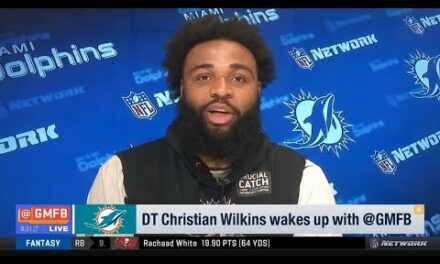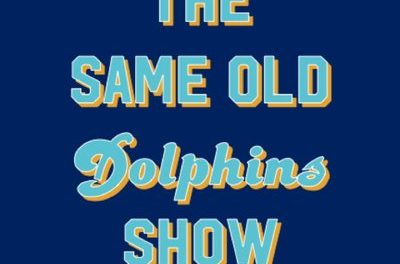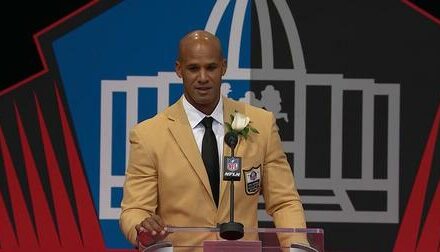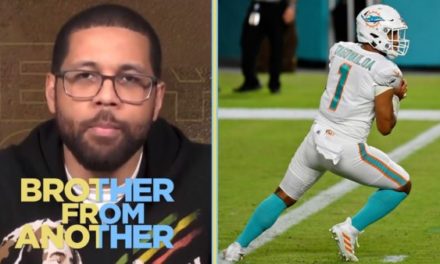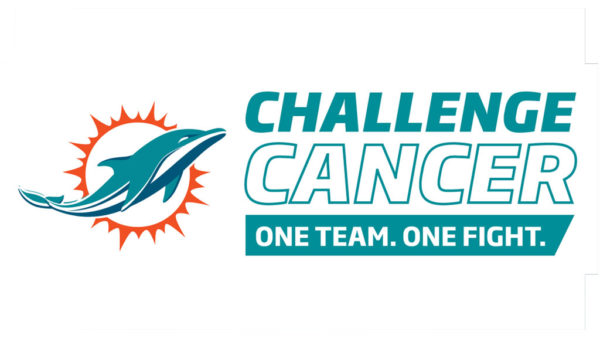
“I know if I don’t do the job on him, we won’t win the game. If I do, we’ll win. I have a lot of pride and I can’t see myself getting beat.”
That spot-on analysis was from Miami Dolphins guard Larry Little, a member of the Pro Football Hall of Fame and one of the best to ever play the game at his position. The “him” he was referring to was “Mean” Joe Greene, the renowned defensive tackle of the Pittsburgh Steelers. Greene is also a member of the Hall of Fame and one of the best to ever play the game at his position.
As Little stated, this matchup, unseen by most observers, would be critical in determining which team would advance to Super Bowl VII. Ultimately, Little would win his personal battle with Greene, and with an assist from the Dolphins’ punter and a relief pitcher at quarterback, Miami would continue their relentless march to perfection and the redemption that awaited them at the Super Bowl.
The Dolphins were catching the Steelers at the height of that franchise’s success to that point in time. After 39 years of futility, Pittsburgh had finally won an NFL playoff game the previous week in miraculous fashion, shocking the Oakland Raiders 13-7 on the play that would later become immortalized as “The Immaculate Reception.”
Franco Harris’ amazing catch of a deflected pass and run toward the winning touchdown against Oakland had moved the team from Cinderella status into that of a Team of Destiny. How else could that play be explained besides the hand of fate guiding that pass into Harris’ outstretched hands? Well, Oakland coach John Madden and owner Al Davis, among others, did have other much less flattering explanations, but beyond the Raiders sphere, they were generally considered sour grapes.
Miami had to travel into this charged atmosphere despite carrying the best record in the league because of the rules at the time, which would not be changed until 1975. Rather than teams earning home-field in the playoffs, there was an annual rotation system that determined the hosts. In 1972, it had the AFC Central champions hosting the AFC East winners.
And so, 1972 wound down. A year that was finishing with the return from space of the Apollo 17 astronauts, still the last men to walk on the moon, a youngster named Bjorn Borg winning Miami’s Orange Bowl Junior Tennis Championship, and Notre Dame and Nebraska preparing to meet in the New Year’s Day Orange Bowl would end with the two NFL conference championship games on New Year’s Eve.
Miami and Pittsburgh would kick off shortly before noon that day, followed by the defending champion Dallas Cowboys facing the Washington Redskins for the NFC title. These would be the last games subject to an automatic home team television blackout-the one for the Super Bowl would be lifted, and the entire policy would change to blackout-only games not sold out within 48 hours of kickoff for the 1973 season.
The Dolphins had wisely brought their weather with them. We would later see AFC championship games in Pittsburgh played in bitterly cold weather, but the 1972 game would feature unseasonably warm temperatures reaching the 60s.
It would be a tightly played game with few turnovers and penalties, but Miami made the first mistake, and it cost them. After the Dolphins picked up two first downs on their first possession, Earl Morrall overthrew wide receiver Howard Twilley and hit Steelers safety Glen Edwards in the numbers. Edwards corralled the ball and returned it 28 yards to set Pittsburgh up at Miami’s 48-yard line.
The Steelers proceeded to do something seldom seen against Miami that season-shoving the ball down their throats. Pittsburgh quarterback Terry Bradshaw, who had spent time in the hospital that week battling the flu, called ten straight running plays. Remember, Hall of Fame receivers Lynn Swann and John Stallworth were still in college, so Bradshaw’s top options were Ron Shanklin and Frank Lewis.
On the tenth play of the drive, Bradshaw called his own number. Miami safety Jake Scott drilled him at the two-yard line and knocked the ball loose. Steelers tackle Gerry (Moon) Mullins had drifted well into the end zone on the play and quickly dove for the ball, recovering it for the first touchdown of the game. The celebration in Three Rivers Stadium was somewhat muted as the dazed Bradshaw was helped off the field with an injured shoulder and neck. He would return in their second series, throw two incomplete passes, and stay on the bench until the fourth quarter.
Now featuring a quarterback matchup between Morrall and Steelers backup Terry Hanratty, who had only attempted four passes all season, defense dominated the rest of the first half. Pittsburgh coach Chuck Noll had previously been Shula’s defensive coordinator with the Colts, guiding one of best defenses in NFL history in 1968. They were so closely aligned in coaching philosophy that Sports Illustrated’s Ron Reid called their matchup “a dandy little looking-glass war.”
The Dolphins’ only consistent offensive weapon in the first half had been tight end Marv Fleming, of all people. After catching only 13 passes during the season, Fleming had three of Morrall’s seven completions in the half. Without Bradshaw, Pittsburgh’s offense stagnated. The Steelers would have likely taken a 7-0 lead into halftime if not for Dolphins punter Larry Seiple.
In that era, kickers often played other positions. Seiple was a backup receiver for Miami and had played running back in college. He had been given the green light by Coach Don Shula to run for a first down whenever he saw the opportunity-but, he had better make it. The timing of that opportunity coming in the second quarter of the AFC Championship seemed unlikely, but it was also necessary.
The Dolphins had lined up to punt from the Pittsburgh 49-yard line. Seiple described what happened next, “The keys are the men in the middle who usually wait. The Steelers didn’t wait. They were turning to go back downfield to help with the return. So I took off. Heck, my own team didn’t even know I was running.” His 37-yard run gave Miami a first down at the Steelers’ 12. Two plays later, Morrall threw a swing pass to Larry Csonka for a nine-yard touchdown after Csonka had only caught five passes during the regular season. It was that kind of game. Seiple would be awarded the only game ball of his career for the play that Don Shula later said: “turned the game around.”
The teams slugged it out for the remainder of the half, and the score was 7-7 at halftime. Seeking a spark to break the stalemate, Shula made The Decision-he turned to Bob Griese to start the second half at quarterback.
That move became even more critical after Hanratty completed two long passes and John “Frenchy” Fuqua ran a 24-yard draw play on the opening series of the second half. The No-Name defense held them to a field goal, but Pittsburgh now led 10-7.
Griese’s first series was a vintage Dolphins march, an 11-play, 80-yard touchdown drive that took 7:29 off the game clock. The two biggest plays that led to Jim Kiick’s two-yard touchdown run were a quick slant pass from Griese to Paul Warfield that broke for 52 yards and a fourth-and-one conversion by Kiick, running behind Larry Little and over Joe Greene. Little had taken charge of that matchup, and Miami had taken charge of the game, now leading 14-10.
After an exchange of punts gave Pittsburgh good field position, Maulty Moore blocked Steelers kicker Roy Gerela’s 48-yard field goal. Griese then led the Dolphins on another methodical scoring drive of 12-plays, 49 yards that consumed 6:38. This included another fourth down conversion, this time by Csonka running behind, you guessed it, Larry Little. These plays were considered much greater gambles in that era than they are today, but Shula’s approach was, “You have to go for the short ones if you want to be the champ.”
The life had been sucked out of the crowd with their team now trailing 21-10, but Terry Bradshaw reentered the game and quickly brought them back. Bradshaw completed four straight passes, the last one a 12-yard touchdown to wide receiver Al Young to complete a four-play, 71-yard drive that put the Steelers back in the game, trailing 21-17 with 5:21 remaining. Young caught the only six passes of his career that season and would add five to that total in this, his final NFL game.
There would be no late-game magic for Pittsburgh on this day, however-Don Shula’s team would simply not allow it. The Steelers got two more cracks at it. The first one ended on a Nick Buoniconti interception of a pass Bradshaw threw right at him after a scramble eerily reminiscent of his desperation pass that became the Immaculate Reception. Finally, linebacker Mike Kolen slammed the door shut by intercepting Bradshaw’s underthrown pass to Young.
The Dolphins celebrated as the clock ran out, and the Three Rivers crowd stood and saluted their team in defeat. While Pittsburgh is generally seen as the “Team of the 1970s,” they were still in the process of building their roster at this time. Miami’s was already there, and this was their time.
Coach Shula, of course, set the tone for the next two weeks leading up to the Super Bowl, echoing the focus of the entire season, “We’ve got the right to go back and get even for what happened in last year’s Super Bowl.” Perhaps they were hoping for another crack at the Cowboys, but the Redskins scuttled that later that afternoon with a 26-3 thumping of Dallas in the NFC Championship. Shula’s team would again be facing a sentimental favorite, a franchise that had not won a title in 30 years and was affectionately known as “The Over-the-Hill Gang.”
No matter. The mission of redemption was nearly complete for the Dolphins, and perfection would be the cherry on top of the Lombardi Trophy. The question of who would start at quarterback would loom large, and Shula did not offer an immediate answer. Earl Morrall had earned the league MVP and was the AFC’s leading passer, but the offense just looked different with Bob Griese, even though he only attempted five passes in the second half. It would be a difficult and critical decision for Shula, who was seeking his own redemption that could only come with a championship.
Coming Next: Part 24 – Perfect Redemption
Appropriately for a team where nothing came easy, the Dolphins survived one of the most infamous plays in football history to defeat the Washington Redskins and become a perfect champion for the ages.
You can follow me on Twitter @jimjfootball.

